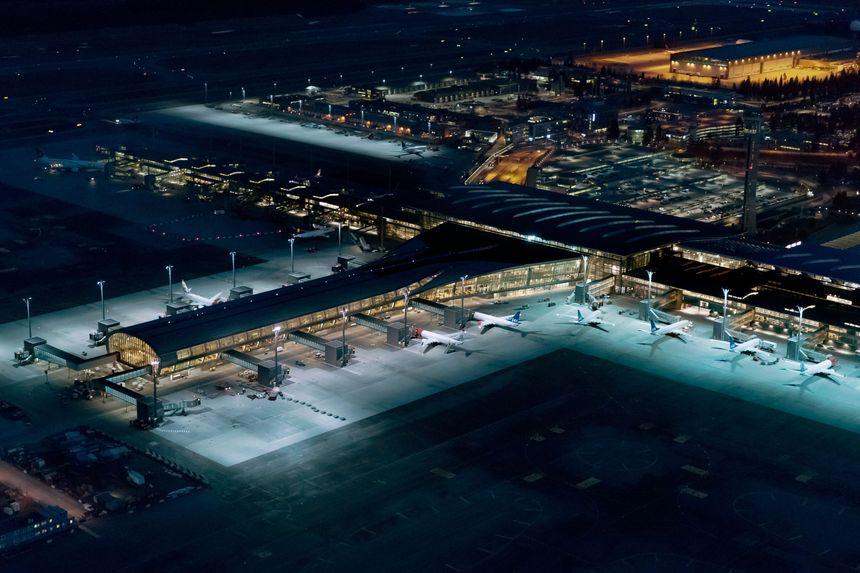
Barrier-free parking: Revolutionizing parking management in the Nordics
In an industry that has seen incremental changes over decades, the Nordic countries have taken major steps in adopting new technologies to improve parking operations. A barrier-free and seamless approach to parking has redefined the experience for parking operators and customers alike. As this paradigm shift gains momentum in the Nordics, it begs the question: What valuable lessons can parking operators worldwide obtain from this Nordic innovation?
The evolution of parking management
From an initially unregulated market to the introduction of payment for parking, the way parking is handled has evolved significantly. Over the years, parking meters have brought structure to parking garages by ensuring rotation in parking and less congestion in highly populated areas. It has also opened doors and promoted turnover for landowners. However, the enforcement of these systems has required manual intervention, like issuing fines to those who overstayed their parking or left without paying. Private parking operators entered the scene as the number of vehicles grew, requiring efficient management of these spaces. Eventually, barriers were introduced and implemented in parking garages throughout Europe. This brought a more secure solution to collecting payment for parking and is, to this day, the standard method in large parts of the world. While such traditional methods are structured, they involve significant investments in infrastructure, such as barriers, and require 24/7 staffing to handle lost tickets or technical failures.
The Nordics vs. the rest of Europe
The parking management industry in the Nordics has distinct characteristics compared to the rest of Europe. Over the past decade, the Nordic region has championed customer-centric approaches and embraced technological integration in parking solutions. Furthermore, the region has seen a rapid adoption of innovative technologies such as Autopay's camera-based, barrier-free system. In contrast, much of Europe still relies on traditional methods, heavily dependent on physical infrastructure like barriers and manual self-service kiosks.
Disruptive innovation setting new standards
Autopay was born from a realization that the parking industry, despite advancements through diverse payment methods and parking apps, was ripe for digital disruption. When entering the parking scene in 2013, Autopay had a vision to revolutionize the industry through digitalization. This marks a significant industry shift from traditional methods to an innovative, digital-first approach.
The idea behind the solution was elegantly simple yet revolutionary: to leverage modern camera technology to track vehicle entries and exits in parking facilities, allowing customers to register their vehicles and payment details once for seamless, barrier-free access. This groundbreaking approach eradicated the need for physical barriers and on-site staffing, opening up the possibility for increased revenue for parking operators, as well as more efficient management of parking spaces.
"This was revolutionary for the parking industry. However, it also faced a lot of skepticism among parking operators and landowners regarding how accurate the ANPR cameras would be. It was also difficult for some to believe they could operate their parking garages without having staff physically present." Stig Ove Gulbrandsen, CEO at Autopay
The cloud-based system seamlessly integrates with parking operators’ existing finance systems and comes with predefined analytics dashboards providing valuable data such as heat maps for parking usage. This data-centric approach ensures not only efficient management but also enhances user experience and aligns with modern digital practices.
Customer-centric and cost-effective
At the heart of Autopay's mission lies a commitment to prioritizing the needs of the end-user. Autopay's approach transformed the industry standard from punitive fines to a customer-friendly approach, by replacing penalties with minimal administrative fees. An improved customer experience fosters loyalty and enhances the parking operators’ brand. Although it was initially met with skepticism, the solution proved to be a game-changer, demonstrating unwavering reliability and efficiency without the need for on-site staff. As a result, it has enabled parking operators to be more cost-effective, while optimizing revenue and elevating their brand.
"After the initial skepticism, parking operators saw that the solution worked and that they could gain tremendous benefits from the various features we offered. There was no longer any doubt about the accuracy of the ANPR cameras and the powerful technology behind the solution." Stig Ove Gulbrandsen, CEO at Autopay
Lessons from the Nordic parking revolution
As we reflect on the Nordic parking revolution, several valuable lessons emerge:
- Embrace technology: The future of parking management lies in embracing cutting-edge technology and adopting innovative solutions that enhance efficiency and customer satisfaction.
- Prioritize customer needs: Placing customers at the forefront of operations fosters loyalty and trust, creating a more harmonious parking experience.
- Cultivate a culture of adaptability: The Nordic parking revolution teaches us the value of fostering a culture of adaptability. In an evolving industry, parking operators should remain agile, ready to pivot and embrace new approaches as technology and customer preferences evolve. This adaptability ensures long-term relevance and success.
The Nordic revolution symbolizes a profound shift towards integrated, customer-centric, and technologically advanced parking management. This can be seen as a testament to the transformative power of innovation, illustrating that embracing change and pushing boundaries can unlock the full potential of parking management. As we navigate the road ahead, the lessons learned from the Nordic experience will continue to guide us toward a smarter, more customer-focused, and technologically advanced future in parking management.
Here for business?
We'd love to talk about how we can work together. If you want to become a business partner, please fill in your contact details.
Related articles

The future of parking management: How to stay ahead of the curve
The parking industry and the world of parking operations are changing at an unprecedented pace. Emerging technologies, evolving regulations, and the dynamic demands of modern consumers are reshaping the landscape of parking management. To not just survive but thrive in this ever-shifting terrain, you must embrace innovation and choose a parking management solution that is truly future-proof. In this article, we are discussing trends and challenges in the industry, before providing solutions on how to stay ahead of the curve.

Future-proof parking technology for Oslo Airport Gardermoen
It’s been several years since Autopay and operating partner Onepark won the tender ahead of the competition, and replaced barriers with free flow ANPR technology.

Autopay at 28 new airports across Norway
Our operating partner Onepark just won the tender with Avinor, a contract worth NOK 850 millions, for managing the parking facilities at 28 airports.